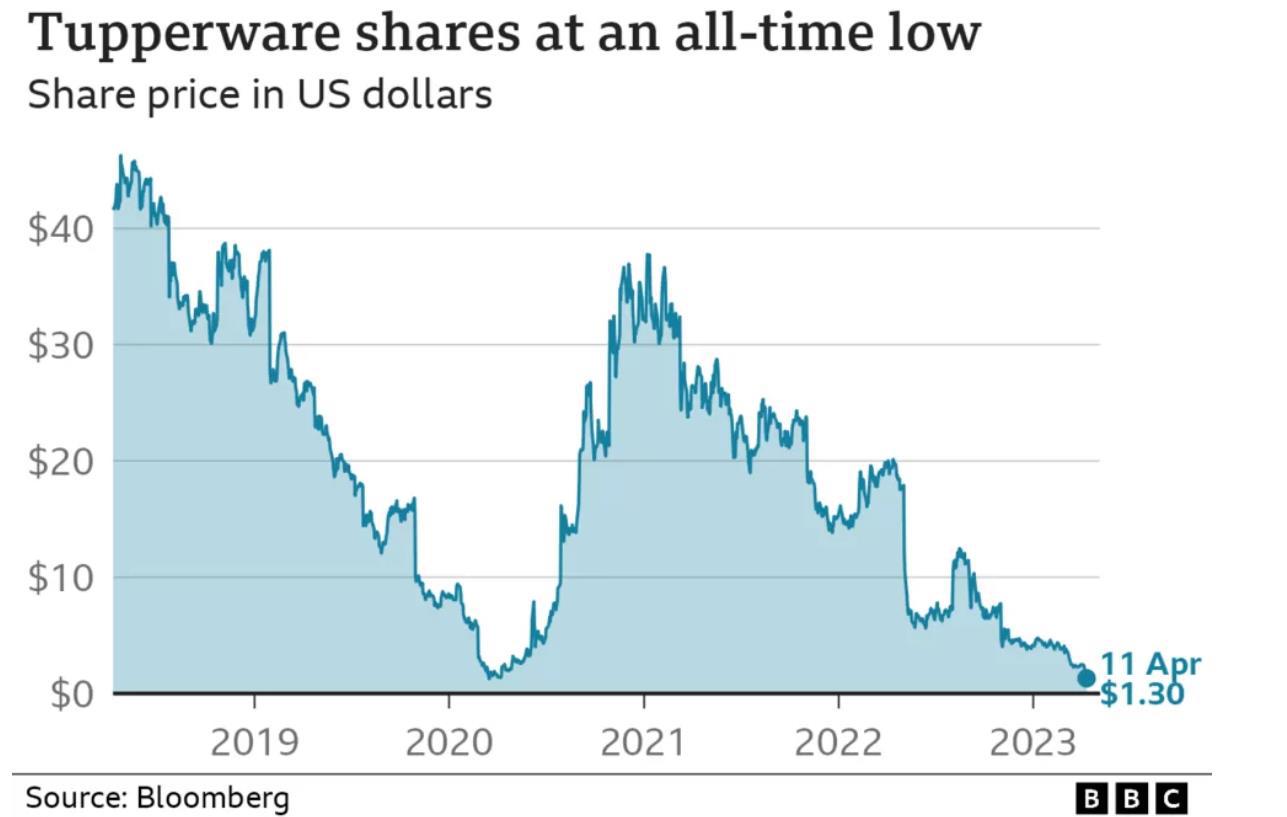Question
The brand Tupperware has become so synonymous with food storage that many people use its name when referring to any old plastic container. But the
The brand Tupperware has become so synonymous with food storage that many people use its name when referring to any old plastic container.
But the 77-year-old US company is seeing cracks form in the once revolutionary air-tight sealing business that made it famous, with rising debts and falling sales prompting a warning it could go bust without investment.
Despite attempts to freshen up its products in recent years and reposition itself to a younger audience, it has failed to stop a slide in its sales.
The firm's 'Tupperware parties' made it an icon during the 1950s and 1960s consumer revolution, and its air-tight and water-tight containers took the market by storm.
But its core business model of using self-employed salespeople who sell primarily from their own homes has been going out of fashion for a while, and was retired altogether in the UK in 2003.
Now company bosses have admitted that, without new funding, a brand name which has passed into common parlance could vanish from the market.
"We use it (Tupperware) as a noun, which is quite unusual for a brand," said Catherine Shuttleworth, founder of retail analysis firm Savvy Marketing.
"I think a lot of younger people will be surprised it is a brand in itself."
While Tupperware was a "miracle product" when first sold decades ago, Ms Shuttleworth added, the market has been flooded by companies offering cheaper alternatives in recent years.
A resurgence during the Covid-19 pandemic, buoyed by people taking up baking and cooking more at home, reversed sharp falls in Tupperware's share price.
But the rise turned out to be temporary.
Sales have slid again since then, largely because the firm has not been "innovative enough" over the past 10 to 20 years to keep up with its rivals, according to Ms Shuttleworth.
A lack of innovation is a far-cry from its early days.
The company was founded in 1946 by a man, the inventor Earl Tupper, but its public face was a woman: Brownie Wise.
Tupper's product was a big deal - it utilised new plastics to keep food fresh for longer - invaluable when refrigerators were still too expensive for many - but until Wise came along, it was not selling.
She had already started organising events to sell the containers, meeting directly with the housewives and mothers the company wanted to reach, at gatherings which were as much about socialising as they were about business.
Her innovative style - and her sales figures - caught the eye of Tupper, and she was promoted to executive level at a time when women were largely excluded from the boardroom.
Wise's and Tupperware's impact is still debated by academics, but many say it played an important role in bringing women into the workforce in post-war America, and provided a source of income to other women around the world.
One of them is Alison Clarke, professor of design history and theory at the University of Applied Arts, Vienna, and author of Tupperware: The Promise of Plastic in 1950s America.
"I think its legacy is the way in which it has provided a source of employment to women who don't always have access to flexible labour," she told the BBC.
"At the time it was first being sold at parties in the US, lots of women were isolated in new post-war suburban towns away from their families.
"The Tupperware parties glamourised dull housework, and you could only buy it if you knew someone who sold it, so it was exclusive, and social, and about relationships with other women.
"I started off thinking it was an exploitative capitalist conspiracy against women, and then I met all of these women who had a fantastic life because of it and saw how it was empowering for them."
'Failed to change'
While the company has always been woman-led on the ground, that has not necessarily been the case in the boardroom - and Prof Clarke says it has struggled to tell its own positive story, or keep up with the times.
"It was a brilliantly designed product that was made magical by the way it was sold," she added, "but in this digital world, that face-to-face model is no longer as relevant".
That is an analysis shared by Neil Saunders, managing director of retail at the consultancy GlobalData, He said Tupperware had "failed to change with the times" in terms of its products and distribution, highlighting that the method of selling direct through its parties "was not connecting" with either young or older customers.
Younger consumers have also embraced more environmentally-friendly products such as beeswax paper to keep food fresh, he added.

Richard Hyman, another retail analyst, said the basic principles of Tupperware's products were "not difficult to copy" by other firms. Given that fierce competition, he said the company had "had a good run".
The company has made some efforts to diversify its strategy, including by selling in US retail chain Target and others around the world, and expanding its range to include other cooking products.
Had Tupperware made bigger changes 10 years ago, Mr Saunders added, the firm might be in a different position now.
But now there is no time for Tupperware bosses to wonder what might have been. The company could go bust without a rapid cash injection - and with such a well-known brand name, the prospect of a retail giant like Walmart or even Amazon swooping in cannot be ruled out, Mr Saunders says.
Shares in Tupperware plummeted on Monday and, despite a small recovery on Tuesday, fears are growing that without significant fresh financial backing, the lights on Tupperware's party could go out for good.
https://www.bbc.com/news/business-65243711
TASK
A marketing plan is a blueprint that comprehensively features an organisation's overall marketing efforts, organisations that are successful in marketing invariably start with a good marketing plan to provide direction and focus for their products and brands.
You are required to undertake an analysis of re-branding, re-positioning and re-marketing of Tupperware in Malaysia as the 77-year old company has been struggling in recent years to maintain its relevance against rivals. Your marketing plan should include (but not limited to) the following sections:
• Executive Summary
• Situation Analysis (current marketing situation, market trends, market growth, SWOT analysis)
• Development of the product
• Marketing Strategy (mission, marketing objectives, segmentation, target markets), positioning, marketing mix/4Ps, marketing research)
• Financials (budgets, sales forecast, expenses forecast)
• Controls
• Other supporting information you may want to include
The purpose of this assignment is to provide you with an opportunity to integrate the theories of marketing management you have learned in the course to the development of a “real-world” product marketing plan.
Tupperware shares at an all-time low Share price in US dollars $40 $30 $20 $10 $0 11 Apr -$1.30 2019 2020 2021 2022 2023 Source: Bloomberg B BC
Step by Step Solution
There are 3 Steps involved in it
Step: 1

Get Instant Access to Expert-Tailored Solutions
See step-by-step solutions with expert insights and AI powered tools for academic success
Step: 2

Step: 3

Ace Your Homework with AI
Get the answers you need in no time with our AI-driven, step-by-step assistance
Get Started


